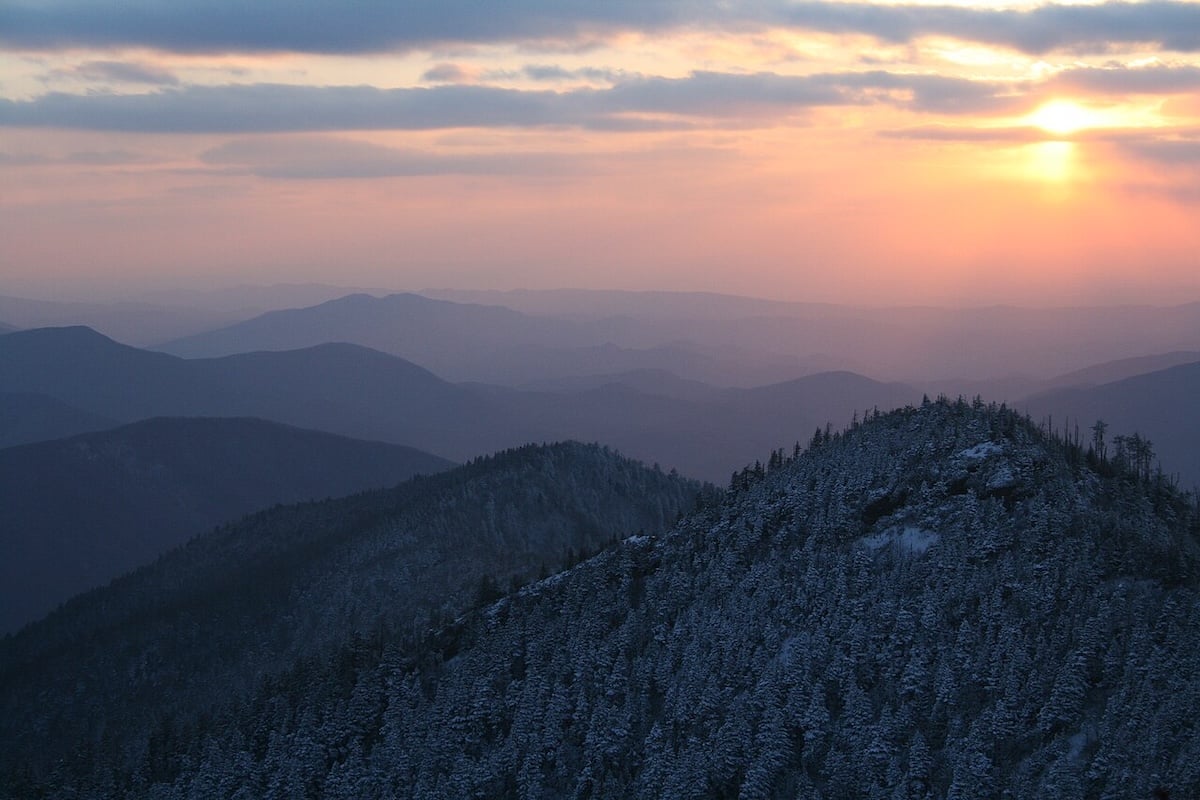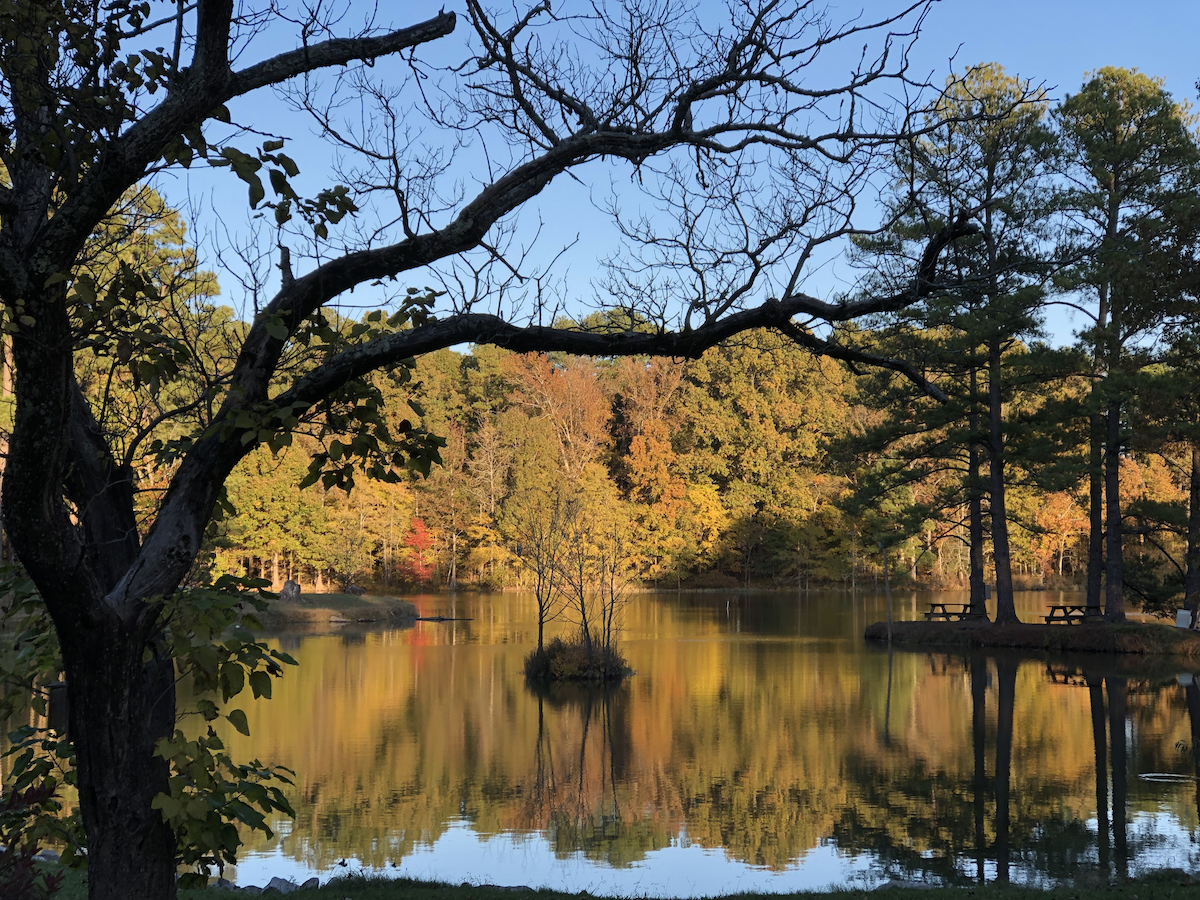
Northwest Tennessee carries a rhythm that’s slower than the rest of the state, its small towns tucked between bean fields, cypress swamps, and stretches of open sky. The quiet here isn’t accidental—it’s shaped by distance, backroads, and communities that have chosen to stay rooted where they are.
From courthouse squares in Weakley County to the stilted cabins along Reelfoot Lake, each place holds a different shade of stillness. Some towns are known for their festivals or oddities, others for the simple fact that nothing much has changed. What unites them is a sense of remove, the feeling that life is carried on at a comfortable distance from the rush of interstates.
Driving through, you notice the long horizons and the way the light hangs low across flat fields. A grain elevator might be the tallest landmark for miles. Churches, ballfields, and co-ops form the social fabric, while fishing holes and hidden creeks round out the landscape. These towns invite you to pay attention to details that might otherwise slip past—an old depot, a painted sign, a porch swing swaying in the breeze.
This list gathers 25 of Northwest Tennessee’s most secluded towns, each with its own character and way of slowing time. Some are little more than crossroads, some carry courthouse squares, and others rest on the water’s edge. Together they form a map of quiet corners where sunlight lingers and life stays steady.
From ridge-top homesteads near the Kentucky line to cypress swamps guarded by herons, each setting invites unhurried exploration. Pack a camera, check the fuel gauge, and settle in for a tour of Northwest Tennessee’s hidden corners.
25. Palmersville – Hillside Settlement With Quiet Crossroads

Palmersville, Tennessee feels like a step back in time, a small town tucked into Weakley County’s farmland where life has always moved at a gentler pace. Its seclusion comes from miles of country roads that keep it far from city traffic and outside attention.
The community’s history as an early trading post still lingers in memory, even as the fields of corn and soybeans have long since become its true foundation. Daily life is marked by agriculture, church gatherings, and neighbors who have known one another for generations.
Visitors may notice the quiet cemeteries, the old barns, or the calm that settles over the countryside at dusk. Palmersville is the kind of place that reminds you how deeply peace can root itself in the land.
Where is Palmersville?

Palmersville, Tennessee rests in the rolling countryside of Weakley County, not far from the Kentucky border. The town is about an hour’s drive north of Jackson, most easily reached by following U.S. 45 and then slipping onto smaller state routes.
The road carries you past farmland and stretches of open sky, giving a sense of distance from busier places. Arriving there, you find a community that feels tucked away, quiet enough to make the outside world seem far off.
24. Gleason – Small-Town Baseball and Quiet Brick Streets

Gleason, Tennessee may be small, but it carries a personality all its own, tucked into Weakley County’s quiet farmland. The town is best known as the “Tater Town,” a nod to its long tradition of celebrating agriculture with an annual festival that fills the streets with parades, food, and music.
Life here is steady and grounded, built on farming, family, and the kind of neighborly ties that make everyone feel connected. Visitors find charm in the festival, the local ballfields, and the easy rhythm of small-town living that seems unchanged by time.
Agriculture remains the heart of its economy, linking each season to the work of the land. Gleason leaves you with the warmth of a place that finds pride in its roots and joy in its simple celebrations.
Where is Gleason?

Gleason sits in Weakley County in western Tennessee, known for its wide farmland and small-town quiet. It lies about 45 miles north of Jackson, reached by U.S. 70 before easing onto country highways that thread through open fields.
The trip shifts quickly from busy stretches to calmer roads lined with silos and farmhouses. By the time you roll into Gleason, it feels like a pause in the countryside, a place that keeps its own unhurried rhythm.
23. Sharon – Railside Village Sheltered by Grain Silos
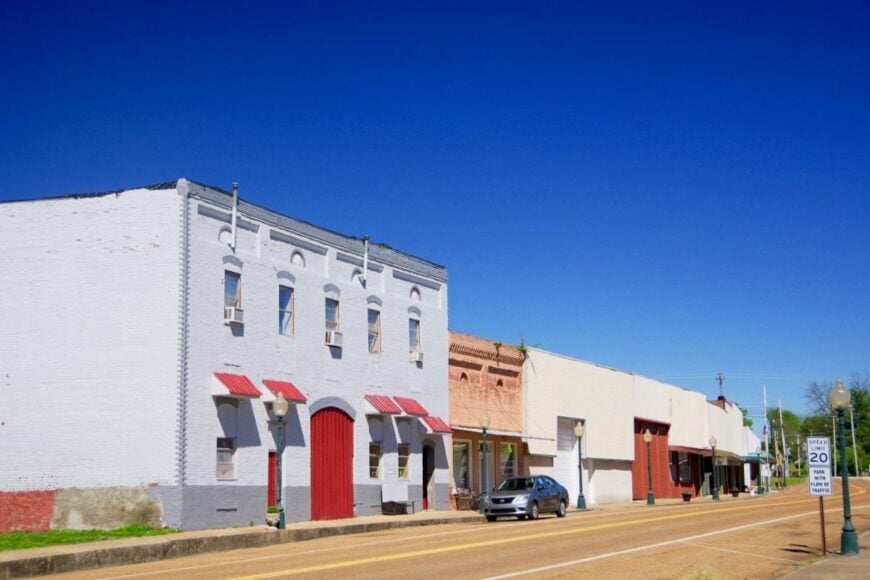
Sharon, Tennessee sits along Highway 45 in Weakley County, but despite the road that runs through it, the town keeps a quiet, close-knit feel. Its small size makes it easy to know faces and names, with life revolving around schools, churches, and gatherings that keep tradition alive.
The town park and ballfields bring neighbors together on warm evenings, while scenic backroads lead out to farmland that stretches toward the horizon. History lingers in its old buildings downtown, reminders of when the railroad once gave Sharon its early boost.
Farming and commuting to nearby towns form the backbone of daily work here, keeping the rhythm steady but simple. Sharon leaves you with the sense of a town that values its roots while holding tightly to its sense of community.
Where is Sharon?
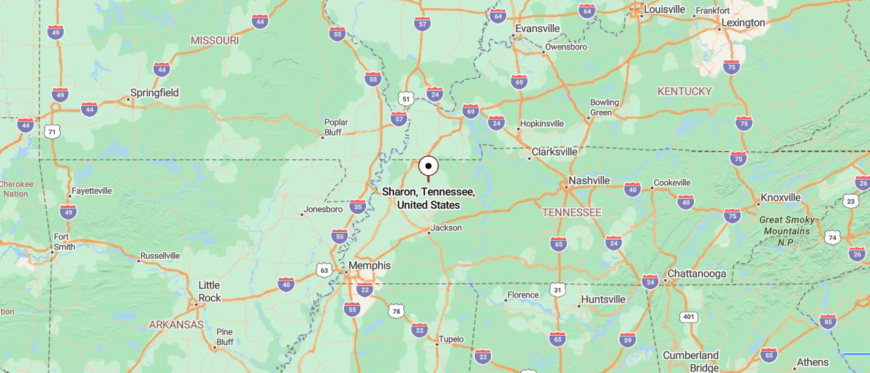
Sharon lies in northwestern Weakley County, Tennessee, set between the towns of Martin and Dresden. It’s about 55 miles northwest of Jackson, reached by following U.S. 45 and then slipping onto quieter local routes.
The drive carries you past farmland and gentle ridges, where the landscape opens wide under a big sky. By the time you arrive, Sharon feels like a simple crossroads town, steady and tucked away from the rush.
22. Woodland Mills – Obion County’s Woodland Outpost
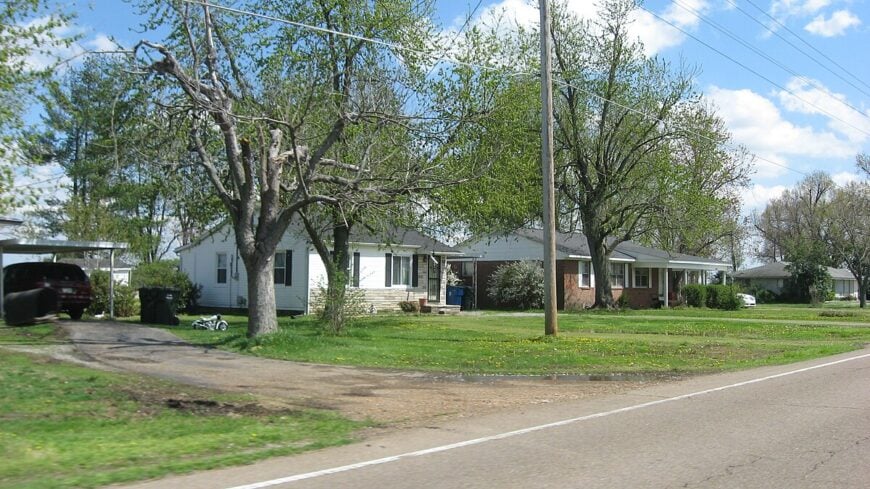
Woodland Mills, Tennessee rests in Obion County near the Kentucky border, a small town surrounded by farmland and quiet country roads. Its seclusion comes not from mountains or forests, but from its modest size and the steady rhythm of agricultural life.
Local industry has long tied residents to the land, with farming and small-scale manufacturing shaping the economy. Daily life remains simple—neighbors meet at churches, families gather for ballgames, and the countryside provides the backdrop for hunting and fishing.
Visitors passing through will find open fields, friendly faces, and the kind of stillness that defines rural northwest Tennessee. Woodland Mills leaves you with the impression of a place built on both work and land, steady and unhurried.
Where is Woodland Mills?

Woodland Mills sits in Obion County, Tennessee, just a few miles south of the Kentucky line and west of Union City. It’s about 65 miles north of Jackson, reached by U.S. 51 before narrowing onto smaller roads that run past farmland and patches of woods.
The approach grows quieter with each turn, as fields stretch farther and houses grow fewer. By the time you reach Woodland Mills, it feels like a town balanced on the edge of open country, distant yet comfortably rooted.
21. Greenfield – Railroad Past and Empty Side Streets
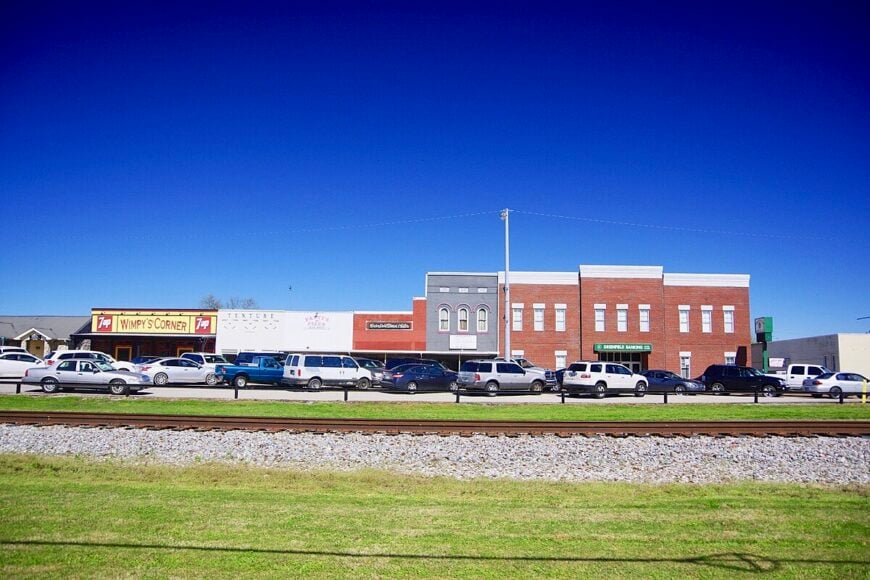
Greenfield, Tennessee sits in northwestern Weakley County, its quiet streets and surrounding farmland giving it the feel of a town both rooted and tucked away. Known for its annual Greenfield Fire Prevention Festival, the community comes alive each fall with parades, rides, and gatherings that showcase its small-town pride.
Daily life flows around schools, churches, and family-run businesses, where neighbors know each other by name. The countryside beyond town offers open fields, winding backroads, and the steady rhythm of agricultural work that has long anchored the community.
While many commute to nearby towns for jobs, Greenfield itself holds close to its traditions and sense of place. It’s the kind of town that stays with you, marked by celebration, heritage, and the calm pace of rural Tennessee.
Where is Greenfield?

Greenfield rests in Weakley County, Tennessee, surrounded by farmland and low, rolling ridges. It’s about 40 miles north of Jackson, most directly reached by U.S. 45 before giving way to quieter state routes.
The road into town passes silos, open fields, and stretches of sky that seem to widen as you go. By the time you arrive, Greenfield feels like a steady pocket of calm, set apart from the faster pace beyond.
20. Dresden – County Seat With Quiet Outskirts
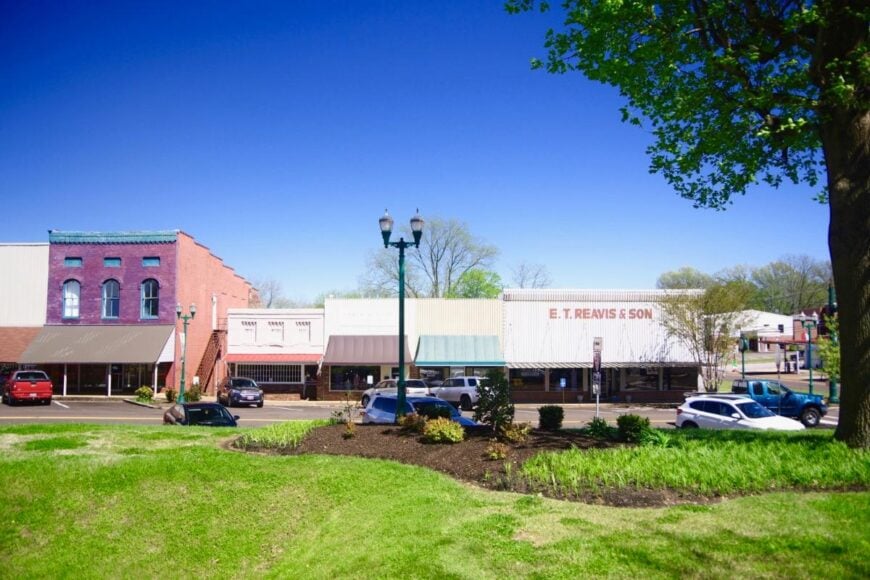
Dresden, Tennessee stands as the county seat of Weakley County, yet it still carries the calm and steady rhythm of a small town. Its courthouse square anchors the community, surrounded by shops and local businesses that have long been gathering places for neighbors.
History runs deep here, with Dresden’s role as an agricultural hub shaping both its economy and its culture. Each year, the Tennessee Iris Festival brings parades, music, and food that fill the streets with life and tradition.
Beyond town, farmland stretches wide, tying families to the land in ways that haven’t changed for generations. Dresden leaves you with the sense of a town that balances heritage and community spirit, offering both roots and belonging.
Where is Dresden?

Dresden serves as the county seat of Weakley County in northwestern Tennessee, sitting at the junction of several small highways. It’s about 55 miles northwest of Jackson, reached by U.S. 45 before branching onto winding state routes that converge in the town center.
The approach shifts from open farmland to courthouse square, where the pace naturally slows. By the time you arrive, Dresden feels like a small hub tucked in the countryside, both central and quietly removed.
19. Como – Tiny Hamlet Along the County Line

Como, Tennessee is one of those tiny towns in Henry County that feels more like a hidden crossroads than a destination. Its seclusion comes from narrow backroads and farmland that surround it on every side, keeping it far from the pace of bigger towns.
Life here revolves around the basics—church gatherings, community suppers, and the kind of neighborly ties that make everyone feel connected. Visitors might notice the quiet beauty of old farmhouses, wide fields, and the stillness that settles over the countryside at dusk.
Farming remains the foundation, with generations working the same soil their families have tended for decades. Como leaves you with the feeling of stepping into a place where simplicity is not lost, but treasured.
Where is Como?

Como rests in southern Henry County, Tennessee, surrounded by stretches of farmland and quiet backroads. It’s about 45 miles north of Jackson, reached by U.S. 70 before narrowing into winding county routes.
The journey feels unhurried, with barns, fields, and tree-lined roads guiding the way. By the time you reach Como, it feels like a hidden stop in the countryside, small but set apart in its stillness.
18. Henry – Old Depot Village Along Two-Lane Roads

Henry, Tennessee rests in Henry County’s rolling farmland, a small town that feels tucked away despite its easy drive to Paris and other nearby communities. Its quiet streets and modest downtown give it a sense of timelessness, where daily life still leans on schools, churches, and family-run shops.
Agriculture has long been the backbone, with corn, soybeans, and livestock shaping both the land and the rhythm of the year. Visitors pass through on scenic drives, catching glimpses of historic homes and wide-open fields that stretch toward the horizon.
The community gathers around local events and ballgames, keeping tradition and connection at the heart of its identity. Henry leaves you with the sense of a town that holds steady, rooted firmly in the land and in its people.
Where is Henry?
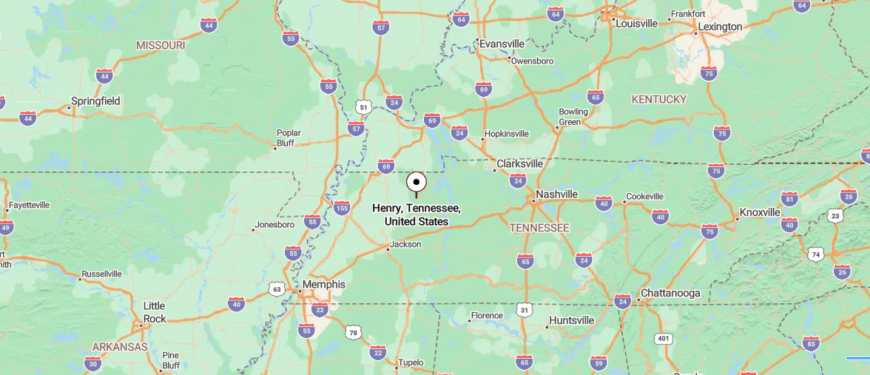
Henry lies in central Henry County, Tennessee, just a short drive south of Paris. It’s about 40 miles north of Jackson, reached by U.S. 70 before turning onto smaller rural highways that ease into town.
The approach runs past open fields, farmsteads, and quiet ridges that give a sense of space. By the time you arrive, Henry feels like a gentle pause in the road, a place where the countryside gathers into a community.
17. Rutherford – Railroad Ghost Echoes and Cotton Rows

Rutherford, Tennessee sits in Gibson County, a town that feels both close-knit and quietly set apart by the farmland that surrounds it. Its history is visible in the downtown storefronts and in the stories tied to the railroad that once gave the community its lifeline.
Life here moves at a neighborly pace—ballgames at the park, church gatherings, and small festivals that bring everyone together. Visitors often notice the charm of its old homes and the ease of drives that lead through fields and rolling countryside.
Farming and small businesses anchor much of the economy, though many commute to nearby towns for work. Rutherford leaves you with the impression of a place where heritage and community still shape the heartbeat of daily life.
Where is Rutherford?
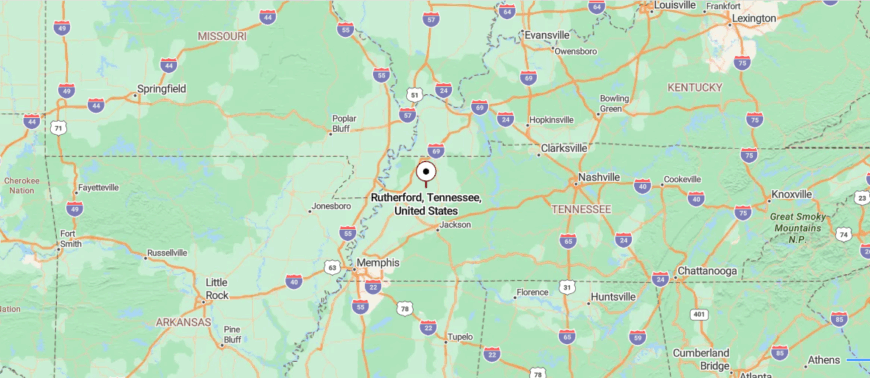
Rutherford sits in Gibson County, Tennessee, along U.S. 45E between Dyer and Kenton. It’s about 25 miles north of Jackson, reached by following the highway straight through farmland and small clusters of homes.
The road in feels simple and steady, with fields stretching wide on either side. By the time you reach Rutherford, it carries the quiet rhythm of a town anchored in open country.
16. Kenton – Twin-County Town With White Squirrels

Kenton, Tennessee rests between Gibson and Obion Counties, a small town best known for its rare white squirrel colony that makes it truly unique. Its seclusion is shaped by miles of farmland and winding backroads that keep it apart from busier places.
Life moves slowly here, with church gatherings, ballgames, and family traditions anchoring the community. Each summer, the White Squirrel Festival fills the town with music, parades, and celebration, keeping that local symbol alive.
Farming remains central, tying generations to the land in a steady rhythm of work. Kenton leaves you with the sense of a town proud of its quirks, where simplicity and tradition blend into something memorable.
Where is Kenton?

Kenton spans both Gibson and Obion Counties in northwestern Tennessee, set among flat farmland and open sky. It’s about 30 miles north of Jackson, most directly reached by U.S. 45E as it threads through a chain of small towns.
The drive passes silos, cotton fields, and long stretches of straight road that slow the pace. By the time you arrive, Kenton feels like a crossroads on the plain, quiet and distinctly apart from the rush.
15. Hornbeak – Hilltop Hamlet Overlooking Bean Fields

Hornbeak, Tennessee sits in Obion County, a small town framed by farmland and quiet country roads that give it a tucked-away feel. Its size makes it easy to know every face, with daily life revolving around schools, churches, and the steady work of rural living.
Farming is the backbone here, shaping both the landscape and the rhythm of the seasons. Visitors passing through find open fields, old barns, and the kind of stillness that settles in at dusk.
Community gatherings and local ballgames provide the highlights, keeping neighbors closely tied together. Hornbeak leaves you with the impression of a place where life remains simple, steady, and rooted in the land.
Where is Hornbeak?

Hornbeak rests in Obion County, Tennessee, a small town tucked into the countryside south/southwest of Reelfoot Lake. It’s about 70 miles north of Jackson, reached by U.S. 51 before tapering onto winding rural roads.
The route carries you past farmland, patches of forest, and open stretches that seem to lengthen with every mile. By the time you reach Hornbeak, it feels like a hidden corner of the county, quiet and set apart beneath wide skies.
14. Ridgely – Lake County Outpost on the River Plain

Ridgely, Tennessee sits in Lake County, a modest town edged by farmland and the quiet waters of Reelfoot Lake just to the west. Its sense of seclusion comes from the long stretches of flat delta farmland that insulate it from major highways and larger centers.
The community has long leaned on farming and small local businesses, with a downtown square that still reflects its early 20th-century roots. Daily rhythms revolve around schools, churches, and gatherings at the park, while Reelfoot offers fishing and birdwatching that add to the town’s character.
Visitors find broad horizons, tree-lined lanes, and a pace that rarely breaks stride. Ridgely leaves the impression of a town that’s anchored by both its farmland and its lake, steady in its quiet corner of northwest Tennessee.
Where is Ridgely?

Ridgely lies in northern Lake County, Tennessee, just east of Reelfoot Lake and about 85 miles north of Jackson. Travelers usually follow U.S. 51 to Tiptonville, then turn onto smaller state routes that wind toward the flat river plain.
The approach runs past cotton fields, drainage ditches, and levees before the grid of streets appears. By the time you arrive, Ridgely feels like a town settled deep in the quiet of the Mississippi River’s backcountry.
13. Obion – Historic Town by the Forked Deer River

Obion, Tennessee rests in the flatlands of Obion County, a town whose quiet streets and surrounding fields give it a sense of wide-open seclusion. Once tied closely to the railroad and river trade, its history still lingers in the layout of downtown and the stories passed through families.
Today, life revolves around farming, small businesses, and community events that bring neighbors together in familiar ways. Visitors might find charm in the town square, the steady farmland drives, or the old landmarks that recall its past.
Agriculture continues to shape both the economy and the rhythm of the seasons here. Obion leaves you with the impression of a town steady in its roots, where history and land still guide daily life.
Where is Obion?

Obion rests in Obion County, Tennessee, near the Obion River in the state’s northwestern corner. It’s about 55 miles north of Jackson, most directly reached by U.S. 51 before giving way to smaller local roads.
The drive rolls past open fields, farmsteads, and stretches of flat country that seem to go on endlessly. By the time you reach Obion, the town feels rooted in the landscape, a quiet settlement folded into wide farmland.
12. Yorkville – Ridge-Top Village With Sparse Blocks

Yorkville, Tennessee sits quietly in Gibson County, a town so small and tucked away it feels almost hidden among the surrounding fields. Its seclusion comes from the miles of farmland and narrow roads that keep it far from the noise of busier places.
Daily life is shaped by farming, church gatherings, and the kind of neighborly bonds that make community the center of everything. Visitors may notice the simple downtown, the historic homes, and the open countryside that seems to stretch endlessly.
Agriculture remains the foundation here, carrying forward traditions that have lasted for generations. Yorkville leaves you with the sense of a place where life is measured in seasons, not clocks, and where quiet is part of its charm.
Where is Yorkville?

Yorkville sits in Gibson County, Tennessee, surrounded by fields and quiet rural highways. It’s about 30 miles north of Jackson, reached by U.S. 45E before tapering into smaller county roads.
The approach moves past farmland and silos, with long views of open country in every direction. By the time you arrive, Yorkville feels like a simple outpost in the fields, steady and removed from the rush beyond.
11. Wynnburg – Bayou Backroads and Cypress-Shadowed Porches

Wynnburg, Tennessee sits near the shores of Reelfoot Lake, its seclusion shaped by winding backroads and the watery landscape that sets it apart. The town is small and scattered, where neighbors gather at churches or along the lake’s edge, and the pace of life feels unhurried.
Reelfoot itself is the heartbeat of the community, offering fishing, boating, and birdwatching that draw both locals and visitors. Old stories of the lake’s creation in the 1811–1812 New Madrid earthquakes still echo, tying history to the land and water.
Farming and outdoor life together form the rhythm of daily living, steady and simple. Wynnburg lingers in memory as a place where the lake’s still waters set the tone, calm and enduring.
Where is Wynnburg?

Wynnburg lies in Lake County, Tennessee, not far from the southern shores of Reelfoot Lake. It’s about 75 miles north of Jackson, reached by U.S. 51 before narrowing onto winding rural routes that lead toward the water.
The trip carries you through flat farmland and quiet stretches where the horizon feels endless. By the time you arrive, Wynnburg feels like a lakeside outpost, quiet and set apart at the edge of the wetlands.
10. Dukedom – State-Line Sanctuary of Wide Lots and Wooded Ridges

Dukedom’s roughly 200 residents are spread across roomy tracts where oak-covered hills roll gently toward the Kentucky border. Weekend visitors stroll the rustic roadside produce stand, hunt for arrowheads along shallow creeks, and trace old logging paths that curve through tulip poplars.
Small family farms and a pair of independent sawmills anchor the local economy, with many households raising cattle or harvesting hay. Night skies stay ink black because the closest streetlights glow fifteen miles away in Martin.
Cell service fades in the hollows, and mailboxes sit a quarter mile apart, reinforcing the sense of remove. The combination of sparse population, dense timber, and the absence of any incorporated government gives Dukedom a quietly self-reliant appeal.
Where is Dukedom?

Dukedom straddles State Route 118 at the meeting point of Weakley County, Tennessee, and Graves County, Kentucky. It sits two hours northwest of Nashville, well outside any interstate corridor.
Most travelers arrive by following Highway 45 to the tiny crossroads of Water Valley and then easing west along a series of numbered farm roads. The single blinking light at Dukedom’s center lets newcomers know they have arrived.
9. Walnut Log – Dead-End Settlement on Reelfoot’s North Shore

Fewer than 60 permanent residents claim Walnut Log, a waterside hamlet tucked among towering cypress knees on the north shore of Reelfoot Lake. Sunrise fishing trips launch from private docks while photographers wait for thin fog to drift across glassy shallows thick with lilies.
Life here revolves around seasonal crappie runs, small boat repair, and guiding services run out of converted carports. During weekday afternoons, the only sounds are woodpeckers, distant frog calls, and the slow chug of an outboard returning from the swamp.
The nearest grocery sits twenty miles away in Tiptonville, and mail is still picked up at a cluster of lock boxes beside a gravel pull-off. The dead-end road that stops at the water’s edge guarantees minimal through traffic, preserving Walnut Log’s hidden feel.
Where is Walnut Log?

Walnut Log lies at the extreme northwest corner of Obion County, reached by following Walnut Log Road until the pavement disappears beside the lake. Dense stands of gum and cypress block any view of highways, emphasizing its isolation.
Travelers usually exit US 51 at Troy, weave west through cotton fields, and trust a handful of hand-painted signs pointing toward Reelfoot. Once the asphalt narrows to a single lane, the settlement appears in a pocket of moss-draped trees.
8. Hollow Rock – Creek-Side Shingle Cabins and Empty Roads

Hollow Rock counts about 700 people who greet each other from porch swings set along a meandering creek that gave the place its name. Anglers test the clear water for smallmouth bass while kids hop across flat stones under the shade of sycamores.
A handful of mom-and-pop carpenters, a feed store, and seasonal campgrounds provide the modest local income. Two-lane Highway 70 passes nearby, but few vehicles detour onto the quiet residential grid, leaving streets open for evening bike rides.
Thick woods press against the town limits, and cell towers are blocked by ridges, creating pockets where radios crackle before falling silent. That sheltered setting lets Hollow Rock retain an unhurried pace that feels far removed from Tennessee’s larger hubs.
Where is Hollow Rock?

Hollow Rock sits in west-central Carroll County, roughly halfway between Jackson and Paris. Its creek-valley setting, wrapped by mixed hardwood hills, keeps it visually and acoustically separate from the broader highway network.
Visitors usually leave Interstate 40 at Exit 126, drive north on Highway 641, then swing east onto a signed county route that descends into the village. The journey includes ten miles with no gas stations, hinting at the seclusion ahead.
7. Mason Hall – Obion County Crossroads Lost in Corn

Only about 150 residents live in Mason Hall, an unincorporated crossroads where late-summer corn towers above the roofs of century-old farmhouses. Photographers arrive at dusk to capture sunlit tassels framing a tiny white church and rusted grain elevator.
Agriculture reigns here, with row crops, custom spraying crews, and a seasonal grain buyer forming the backbone of the local economy. There are no stoplights, and cattle occasionally wander across the main intersection, pausing trucks more often than traffic signs do.
Nighttime brings sweeping views of the Milky Way because the closest parking lot lights blink from Union City, fifteen miles east. The absence of retail chains and the maze of field lanes that surround Mason Hall underline why the settlement remains little known outside Obion County.
Where is Mason Hall?

Mason Hall is tucked along State Route 216 in northwest Tennessee’s floodplain farm belt. Flat horizon lines and identical-looking lanes make it easy for newcomers to miss the single sign marking the hamlet.
Most drivers reach it by turning west off US 51 at Troy and following the aroma of freshly tilled dirt. The last five miles run past nothing but corn, soybeans, and the occasional red-roof barn, reinforcing its off-the-map feel.
6. Puryear – Porch-Swing Town on the Kentucky Line

Puryear’s 650 residents enjoy wide yards dotted with maples and porch swings that creak softly in the evening breeze. Locals gather at the tiny city park for bluegrass pickin’ circles or head to the volunteer fire hall for monthly catfish fries.
Thanks to the surrounding timber industry and nearby soybean farms, most jobs involve sawmills, trucking, and seasonal field work. Trains no longer stop here, and US 641 bypasses the center by two miles, leaving side streets exceptionally quiet.
Deer wander through backyard gardens, and fox calls replace car horns after sunset. Layered pine stands along the state boundary add a sense of enclosure that makes Puryear feel worlds away from larger towns.
Where is Puryear?

Puryear occupies the northern tip of Henry County, just two miles south of the Tennessee–Kentucky state line. High ground and thick plantations of loblolly pine screen it from the four-lane highway to the east.
Visitors exit US 641 onto a county road, cross a single rail spur, and roll past hay bales before spotting the modest downtown square. The short detour is enough to shed cell reception momentarily and confirm the town’s out-of-the-way personality.
5. Big Sandy – River Bluffs and Bald Eagles, Population 500

Big Sandy’s population hovers near 500, many of whom wake to the call of bald eagles nesting along the Tennessee River bluffs just outside town.
Daytime adventures include kayaking the winding Big Sandy River, hiking the overlook trails at Eagle Creek Wildlife Refuge, and docking at rustic marinas that sell homemade peach ice cream. Jobs center on guiding services, bait shops, and small engine repair that cater to visiting anglers and campers.
Isolation grows in every direction as heavy timber and river bends limit road access and funnel most visitors along one serpentine route. Power lines disappear beneath the canopy, and radio signals bounce off limestone walls, muting outside noise.
The resulting hush allows Big Sandy to landscape its days with lapping water and rustling leaves instead of traffic.
Where is Big Sandy?

Camden sits a good distance from interstate lanes, and Big Sandy lies even farther off the grid. It occupies a peninsula framed by the Tennessee River to the east and Kentucky Lake to the north—water that forces through-traffic to detour wide.
Follow SR 69A into town, then continue on Front Street beside the river. The last mile hugs steep bluffs and tight switchbacks, a reminder of how the terrain quietly guards this riverside retreat.
4. Rives – Depot Ghost Town on the Abandoned Rail Line

About 300 people live in Rives, where a mothballed red-brick depot, once buzzing with freight trains, now sits silent beside an overgrown spur. Visitors photograph rusty rail cars, wander among Queen Anne cottages, and picnic under oaks that canopy the broad town square.
A small feed mill, part-time post office, and repair garage provide the limited commerce still operating along the abandoned rail line. County Route 216 loops around rather than through the settlement, so passing motorists rarely glimpse its shaded streets.
With acre lots buffered by mature pecans and maples, neighbors remain pleasantly spaced apart. The absence of rail traffic combined with distance from any state highway cements Rives as a quiet, almost forgotten, waypoint.
Where is Rives?

Rives sits five miles south of Union City in Obion County and one mile west of the defunct Illinois Central rail grade. Low ridges shield it from highway noise, and no marked truck route intersects its limits.
Travelers exit US 45W, cross bean fields on a two-lane blacktop, and suddenly find themselves beside the silent depot. The quick transition from open farmland to shaded streets highlights how neatly the place is tucked away.
3. Trimble – Twin-County Retreat Wrapped in Cotton Fields

Trimble hosts roughly 600 residents who stroll along century-old brick storefronts painted in soft pastels that catch late afternoon sun. Community life revolves around Friday night catfish suppers, seasonal cotton festivals, and high school baseball games held on a jewel-box diamond beside the water tower.
Agriculture dominates employment with gins, fertilizer dealers, and custom harvest crews servicing the endless cotton rows that wrap both sides of town. Main Street widens into nearly empty lanes because State Routes 89 and 105 detour south, leaving little transient traffic.
Porch rockers stay audible from block to block, helped by the broad footprint of shuttered storefronts that muffle outside hum. That blend of wide streets and surrounding fields gives Trimble a time-capsule feel that seems isolated despite the water tower’s blinking beacon.
Where is Trimble?

Trimble straddles the line between Obion and Dyer counties, ten miles west of the Obion River bottomlands. The settlement sits off larger arteries, so visitors usually reach it by zigzagging rural highways from Dyersburg or Union City.
Grain trucks ply these roads during harvest, yet the lack of an interstate within thirty miles shields the area from constant movement. Arrival feels abrupt as cotton rows open into a grid of brick buildings framed by vintage streetlamps.
2. Samburg – Reelfoot Lake’s Quietest Fishing Village

Roughly 400 people call Samburg home, their days synced to the shallow waves lapping Reelfoot Lake’s cypress-lined shoreline. Early risers watch mist drift around fishing piers before heading out to catch crappie or photograph white pelicans that glide past stilted cabins.
Small eateries serving fried catfish, family-run boat rental kiosks, and the state park visitor center provide most local jobs. With water to the north and west and bayou backroads to the south, Samburg feels set apart from conventional road grids.
Sunsets paint the sky without competition from neon signs, and the soft splash of turtles replaces city chatter. The surrounding wildlife refuge keeps development at bay, heightening the village’s quiet charm.
Where is Samburg?

Samburg hugs the southwest shore of Reelfoot Lake in northern Obion County, fifteen miles from the nearest four-lane highway. Reaching it typically involves exiting US 51 at Troy, following State Route 21 through farm fields, then skirting levees that guard the lake.
The route narrows to a causeway with watery vistas on both sides, reminding travelers they are venturing into a protected ecosystem. Because the road dead-ends farther north, only intentional seekers find their way here.
1. Cottage Grove – A One-Stoplight Hamlet Amid Endless Soybean Fields

Fewer than 100 residents keep Cottage Grove ticking, its single stoplight blinking quietly between emerald soybean fields that stretch to every horizon. Photographers park beside the lone general store to capture morning fog lifting over gravel lanes and weathered silos.
A family-owned custom cabinet shop, seasonal grain hauling, and weekend farmers markets provide the modest local income. Freight trains pass without stopping, and the nearest fast-food sign is a fifteen-minute drive south in Paris.
Even the post office closes mid-afternoon, leaving chirping meadowlarks as the town’s only soundtrack. The combination of ultra-small population, flat cropland, and limited services creates a striking sense of pastoral stillness.
Where is Cottage Grove?

Cottage Grove is located in northern Henry County, exactly fifteen miles north of Paris along State Route 140. Flat farmland stretches unbroken for miles, so distant tree lines mark the only elevation change.
Visitors drive two-lane blacktop flanked by beans and wheat until the solitary stoplight signals arrival. With no alternate routes or commercial strips, the hamlet feels like a gentle pause in an ocean of green.



